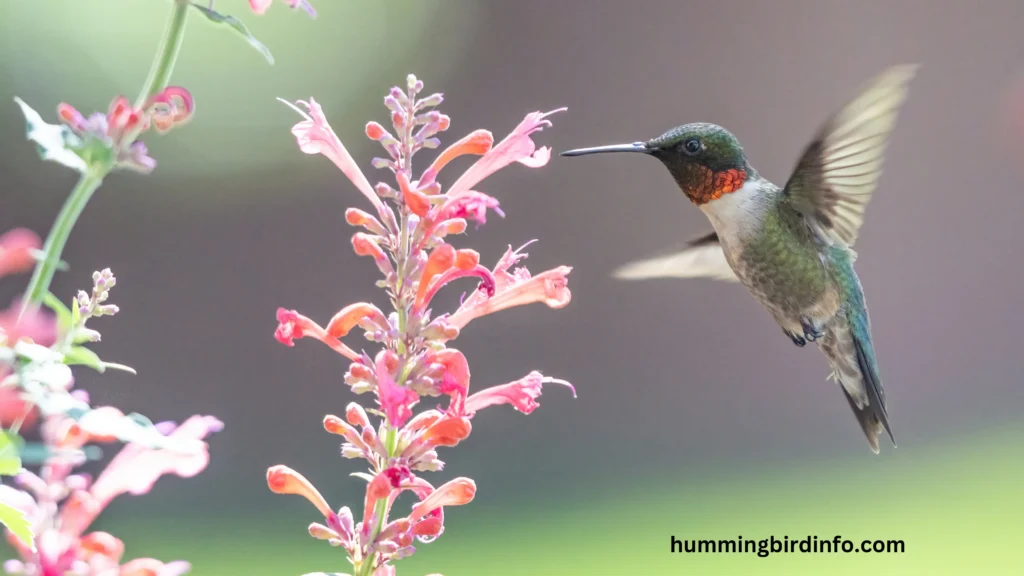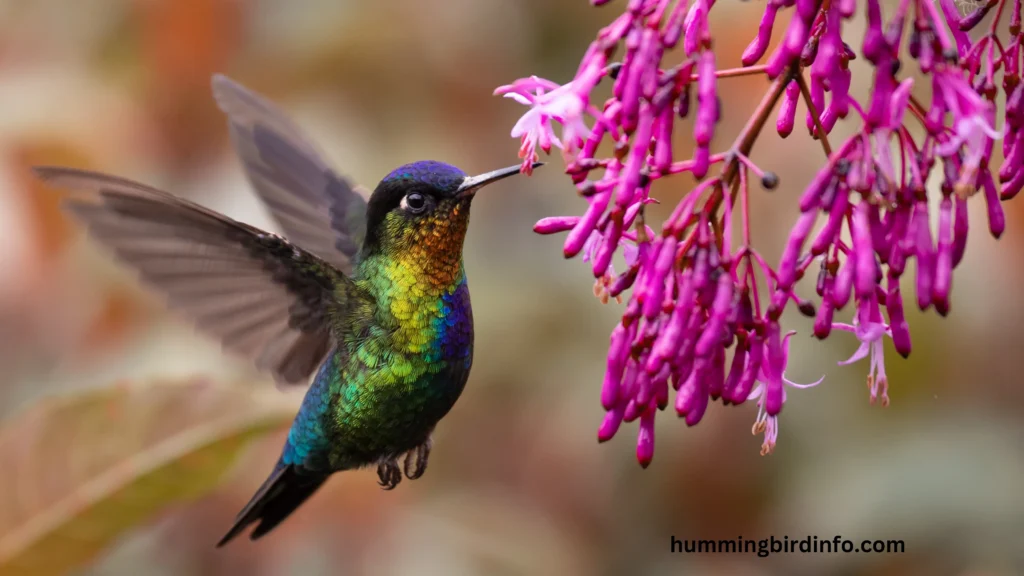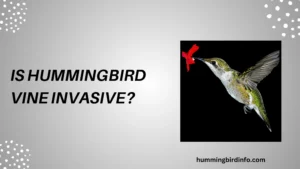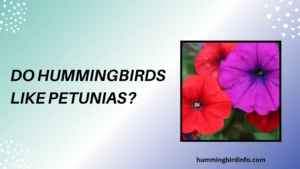Hummingbird mint (Agastache) has become a popular choice among gardeners, renowned for its ability to attract pollinators, vibrant blooms, and aromatic foliage. Its long blooming period and ability to thrive in a variety of conditions make it an attractive option for any garden.
But with its popularity comes a critical question: Is hummingbird mint invasive? This question arises as more gardeners seek to understand whether Agastache poses any risk to local ecosystems or whether it is simply a vigorous grower.
Before diving into the issue of invasiveness, it’s essential to understand the plant’s characteristics. Is it truly invasive, or does it simply spread rapidly in ideal growing conditions?
While the term “invasive” is often used loosely, it’s crucial to distinguish between a plant that spreads aggressively and one that can cause ecological harm. In this blog, we will explore the spread of hummingbird mint, examine its potential invasiveness, and discuss how gardeners can manage it responsibly.
Contents
- 1 Understanding Hummingbird Mint (Agastache)
- 2 How Hummingbird Mint Spreads
- 3 Is Hummingbird Mint Really Invasive?
- 4 Regional Variations and Native Status
- 5 Responsible Gardening Practices
- 6 Conclusion
- 7 FAQs
- 8 Is hummingbird mint invasive?
- 9 How does hummingbird mint spread?
- 10 Can I control the spread of hummingbird mint in my garden?
- 11 Is hummingbird mint native to the U.S.?
- 12 Will hummingbird mint take over my garden?
- 13 Can I grow hummingbird mint in containers to prevent it from spreading?
Understanding Hummingbird Mint (Agastache)
Botanical Description Hummingbird mint, or Agastache, is a member of the Lamiaceae (mint) family. It is an herbaceous perennial that grows in a variety of shapes and sizes.
The plant typically reaches 1 to 3 feet in height and produces spiky clusters of tubular flowers in a wide range of colors, from purple and pink to orange and red. The aromatic leaves, which can smell like mint or licorice depending on the species, contribute to the plant’s appeal.
Native Range and Diversity Agastache species are primarily native to North America, particularly in the western U.S., though some species are found in parts of Asia. The genus includes a wide variety of species, such as Agastache foeniculum (Anise Hyssop), Agastache cana (Texas Hummingbird Mint), and Agastache rugosa (Korean Mint).
These species vary in size, shape, and color, making them versatile plants for gardens, especially those aiming to attract pollinators like hummingbirds, bees, and butterflies.
Key Characteristics The appeal of hummingbird mint is rooted in its striking appearance and beneficial properties. Its aromatic leaves provide fragrance, while the colorful tubular flowers are particularly attractive to pollinators.
Hummingbird mint is also drought-tolerant in some species, which makes it an excellent choice for xeriscaping and low-water gardens. The plant’s long blooming period—typically from summer to fall—ensures that gardens remain lively and vibrant throughout the growing season.
Common Species and Cultivars Several species and cultivars of Agastache are popular among gardeners. For example, Agastache foeniculum is known for its anise-scented leaves and is often used to attract both pollinators and beneficial insects.
Cultivars like ‘Blue Fortune’ and ‘Black Adder’ are bred for their compact size and abundance of flowers, making them ideal for smaller gardens.
How Hummingbird Mint Spreads
Self-Seeding The primary method of spread for hummingbird mint is self-seeding. Agastache produces seeds that are readily dispersed by wind, pollinators, or even water.
The seeds often germinate in late spring or early summer, and if not managed, they can lead to an increase in the plant population. This process can result in a large number of new plants within a garden, especially when conditions are favorable.
Rhizomatous Spread (Limited) Although self-seeding is the main spread mechanism, some species of Agastache also spread via rhizomes—underground stems that produce new shoots.
This form of spread is usually more limited compared to self-seeding, but it can still contribute to the expansion of the plant. Rhizomes allow the plant to establish itself in new areas, although this form of spread is generally more contained.

Factors Affecting Spread Several factors can influence the spread of hummingbird mint, including soil type, moisture levels, and sunlight. Well-drained soils are ideal for seed production and germination, and areas with ample sunlight tend to encourage more prolific growth.
Climate and the availability of resources such as water and nutrients can also impact how quickly the plant spreads. In areas with low competition from other plants, Agastache can establish itself rapidly.
Is Hummingbird Mint Really Invasive?
Defining “Invasive” To determine whether hummingbird mint is invasive, it’s essential to understand the definition of an invasive species. Invasive species are typically non-native plants or animals that spread aggressively and disrupt native ecosystems.
They often outcompete native species for resources, leading to a loss of biodiversity and ecological imbalance. Invasive plants can also cause economic harm by damaging agriculture or infrastructure.
Agastache’s Behavior When it comes to Agastache, it is important to recognize that while it can self-seed prolifically, it does not exhibit the aggressive behaviors typically associated with invasive species.
Unlike plants such as kudzu, garlic mustard, or Japanese knotweed, Agastache does not form dense, monoculture stands that displace other plant species. Its spread is usually limited to garden spaces and is easy to control with responsible gardening practices.
Comparison to Truly Invasive Plants In comparison to invasive species, Agastache’s spread is relatively slow, and it is easy to manage. It does not outcompete native plants in the same way that more notorious invasive species do.
Agastache also provides valuable ecological benefits, such as supporting native pollinators like hummingbirds and bees, which further differentiates it from invasive species that harm ecosystems.
Ecological Impact In general, Agastache’s impact on native ecosystems is minimal. While it can spread quickly in gardens, it does not typically threaten local wildlife or plant communities. In fact, it contributes positively by attracting a wide variety of beneficial pollinators, which helps maintain biodiversity.
For these reasons, Agastache is more accurately described as a vigorous spreader rather than a truly invasive species.
Regional Variations and Native Status
Native vs. Non-Native Some species of Agastache are native to North America, particularly in the western U.S., while others, like Agastache rugosa, are non-native and have been introduced from Asia.
The native status of a plant can influence whether it is considered invasive. Plants that are native to a region are less likely to be invasive because they are part of the established ecosystem.
Regional Considerations The spread and behavior of Agastache can vary based on location. In regions where Agastache is native, it tends to fit into the local ecosystem without causing harm.
However, in areas where it is non-native, it may spread more aggressively and require monitoring. Factors such as climate, soil conditions, and the presence of natural predators or competitors can affect how well Agastache establishes itself in the landscape.
Local Regulations Gardeners should be aware of local regulations regarding non-native plants. Some areas may have specific guidelines for planting non-native species like Agastache, especially if the plant is known to spread uncontrollably.
It’s important to check with local authorities or native plant societies to ensure that you are following responsible gardening practices.
Focus on Native Species To mitigate the risk of Agastache spreading beyond control, gardeners are encouraged to use native species of Agastache in their gardens. Native species are better adapted to the local climate and are less likely to cause ecological problems.
Additionally, using native plants supports local wildlife and helps maintain the integrity of regional ecosystems.

Responsible Gardening Practices
Managing Spread There are several ways to manage the spread of hummingbird mint in your garden. One effective method is deadheading the flowers before they go to seed.
This prevents the plant from producing seeds that can disperse and lead to new plants popping up. Monitoring seedlings and pulling unwanted plants promptly can help keep the population under control.
Dividing Clumps Another way to manage the growth of Agastache is by dividing clumps every few years. This helps prevent the plant from becoming too large and ensures that it remains manageable.
Dividing the plant also promotes healthier growth and encourages more flowers, providing continued benefits to your garden.
Choosing Cultivars Opting for certain cultivars that are less vigorous or produce fewer seeds can also help control the spread of Agastache.
For example, some cultivars have been bred to be more compact and less likely to self-seed, making them easier to manage in smaller gardens or spaces where you want to limit growth.
Creating a Balanced Garden A balanced garden with a variety of plants will naturally help prevent any one species from dominating. Including companion plants alongside Agastache can help create a diverse ecosystem, which can reduce the potential for overgrowth.
Additionally, planting in areas where Agastache has less space to spread can keep it from becoming invasive.
Long-Term Management Ongoing monitoring and maintenance are key to managing Agastache in your garden. Regular pruning, checking for new seedlings, and removing unwanted plants will keep the plant from becoming a problem.
Long-term care ensures that Agastache remains a beautiful and beneficial addition to your garden without negatively impacting the environment.
Conclusion
In conclusion, hummingbird mint (Agastache) is a vigorous grower but not truly invasive. While it can self-seed prolifically, it does not exhibit the aggressive behaviors typical of invasive species, nor does it pose a significant threat to native ecosystems.
By using responsible gardening practices such as deadheading, dividing clumps, and choosing less vigorous cultivars, gardeners can easily manage the spread of this beautiful plant.
The benefits of Agastache, such as attracting pollinators and adding vibrant color to gardens, far outweigh its potential to spread uncontrollably.
By being aware of local conditions and following best practices, gardeners can enjoy the beauty of Agastache without worrying about it taking over their landscapes.
FAQs
Is hummingbird mint invasive?
Hummingbird mint (Agastache) is not considered invasive but can spread aggressively in certain conditions.
How does hummingbird mint spread?
It primarily spreads through self-seeding, although some species may also spread via rhizomes.
Can I control the spread of hummingbird mint in my garden?
Yes, you can manage its spread by deadheading, removing seedlings, and dividing the plant regularly.
Is hummingbird mint native to the U.S.?
Some species are native to North America, while others, like Agastache rugosa, are non-native.
Will hummingbird mint take over my garden?
It can spread quickly, but it typically does not take over gardens like invasive species.
Can I grow hummingbird mint in containers to prevent it from spreading?
Yes, growing it in containers helps control its spread.








